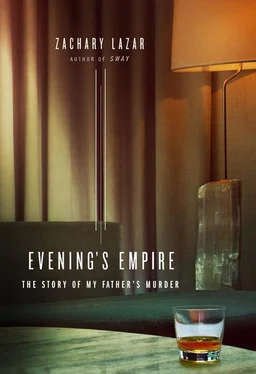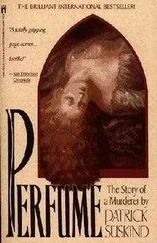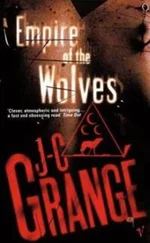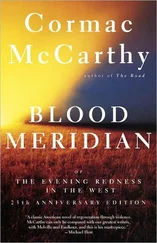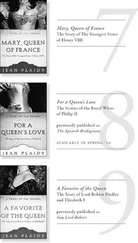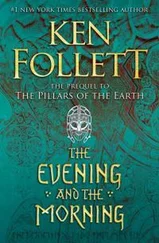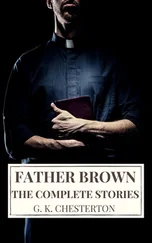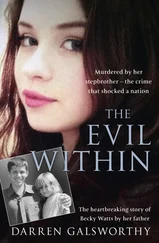
Don Bolles is the reason I know so much of this story: my father’s yogurt spoons, his dental appointments, his contracts and memos and the restaurants he frequented. When the bomb went off under Don Bolles’s car, the windows on one side of the Clarendon Hotel were shattered and guests came out onto their balconies to see a coil of smoke rising into the sky. Bolles himself survived for eleven days of physical agony. They amputated one leg, then the other, then his right arm, in an effort to stop the infection that eventually killed him. His murder led a group of journalists from around the country to join together and descend on Phoenix for six months to investigate what had happened and why. Their effort was called The Arizona Project. The group, the Investigative Reporters and Editors, looked into every dark corner they could find. They published a series of twenty-three articles in several newspapers across the country and accumulated a vast trove of documents and interviews now housed at the University of Missouri in Columbia. I spent days there looking over some of their files and listening to some of their cassettes, and I could have spent several more weeks researching further. In a way, because of those files, I learned more about my father than I might know if he were still alive.

As of 2008, they were still sorting out the tangled finances of Cochise College Park, one of Warren’s earliest and most compromised projects. Lots had been sold two or three times, mortgages had gone unrecorded, back taxes had accumulated, there were hundreds of owners with contracts and even satisfied mortgages but no titles or deeds. Whole sections of the subdivision were “abandoned to acreage” and sold off at a land auction. One report estimates a total of $40 million in fraud.
I asked around Camp Verde for any information about fraud at Verde Lakes but didn’t find anything. The most definitive comment I got there was from a title insurer who told me that by and large Consolidated had a better reputation than Warren’s other firms. Later, I found A. A. McCollum, the man who bought Consolidated in 1973 and was tried in federal court for whatever crimes may have been committed before he took over. He and the other three company officers were found innocent.

The Beth El Cemetery is in a small corner of a vast, landscaped compound called the Greenwood Memorial Park on Van Buren Street near the Papago Freeway. A series of small roads leads you from one field to the next, the different sections designated by small numbers painted in white on the trunks of trees. I had never been there before. I drove around and got lost and asked an employee for directions, and eventually I found a small, garage-like building with one wall larger than the others, painted red, a large white stylized menorah in front of it. I had a chart and I had written down the number of my father’s plot, which I found after a few more minutes of looking. I ended up staying there much longer than I expected. There was no one else around.
His stone is simple, made of blue-tinted granite, with his name beneath a Star of David, a Hebrew inscription, and the words Loving Son, Husband & Father . Beneath the dates is another inscription, Held Close in Our Hearts, and five more Hebrew letters. His stone is next to my grandparents’ stone, Louis and Belle Lazar, who both survived their son by ten years. They are buried side by side and share a stone that says Lazar and gives their names and dates beneath.
There are rituals but I don’t know them. The grayish blue stones sat amid the dead grass, which was yellow and dry as hay. I brushed them clean of some clippings left there by a lawn mower. I didn’t know when the last time was that anyone had come to these graves and I understood in a way I never had before why such visits are necessary. I looked at the gray stone and imagined the forty-year-old man. Silence, the three of them there — my father and my grandparents — the highway nearby, so close you could see the cars in their crowded lanes. It was a sunny day, the blue sky very still, cloudless and cold.
People talk about the mystery of evil, but evil seems less mysterious to me than good. The word good is harder to say with conviction than the word evil — good is harder to define. In the Jewish tradition, you can’t call it by name. It’s called Adonai. To say the actual word would be to denigrate its mystery, which is not only gentle but fierce, perhaps even inclusive of evil. When Job asked God why God had forsaken him, this is the knowledge I think Job received.
He came alive for me while I wrote this book. I still can’t remember him, but I will remember this portrait of him. A kind of conjuration. Another stone to mark his passage on this earth.
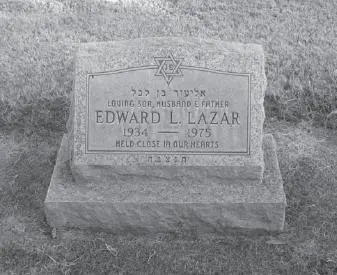
In 2006, I started researching this book with a phone call to a Phoenix police sergeant named Mike Torres, whose name appeared in the Arizona Republic article that now opens the prologue. Torres and I talked about my project and he gave me several leads, including the obvious but very valuable recommendation to call Chuck Kelly, one of the two reporters who had written the article. Immediately, Chuck made this project viable — on his own time, he went through the Republic ’s archives and sent me copies of every article they’d printed that included my father’s name. In addition, he shared with me his extensive knowledge of Arizona in the time period. Another reporter, since deceased, Al Sitter, also gave to me of his time and memories. Kelly’s and Sitter’s articles and those written by their colleagues at the Republic and the Phoenix Gazette provided me with much of the factual outline of this book. I also referred constantly to the work of The Arizona Project reporters, and to Michael F. Wendland’s account of their story in his book, The Arizona Project. In an era when the very survival of print journalism is in jeopardy, the work of these writers is a vivid reminder of the importance of newspapers, and I thank them for what they’ve done. Thanks also to Dave Wagner, an expert on this period in Arizona’s history and its staggering array of figures.
Through their recollections, my father’s friends and family members gave me the ability to imagine him beyond the bare sketch provided by my documentary research. I owe an enormous debt of gratitude to Carol Nichols Turoff, Ted and Elaine Kort, Ron Fineberg, Beverly Fineberg, Murray Goodman, Harry Swirnoff, Earl Geller, Ira Feldman, Norton Stillman, and Jeff Lazar. Thanks also to David Nichols. Above all, thanks to my mother, who supported this book from the beginning and, so that I could write it, relived some of her most painful memories.
I want to also thank George Weisz, senior assistant to the mayor of Phoenix; former Phoenix police detective Jon Sellers; Linda Whitaker of the Arizona Historical Foundation; William Stolz and David F. Moore at the Western Historical Manuscript Collection at the University of Missouri; Beth Kopine and Mark Horvit at Investigative Reporters and Editors; Ron Passarelli and Vicky Rokkos at the Arizona Department of Real Estate; Tim Muse of Land Am Title; Tina McMillian at the Arizona attorney general’s office; former Maricopa County prosecutor Don Harris; Bill Farrow; A. A. McCollum; Dave Cross; James Cornwall; Winojene Harris; Tom Henze; and Chris Nolan.
Читать дальше
